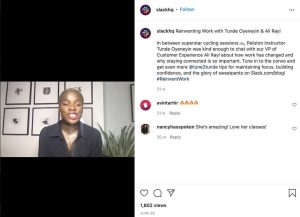Though content can be constantly optimized for search with off-page SEO tactics, the returns on time spent may diminish as SEO experts identify that the rise in position momentum begins to slow. In some cases, the work may begin to be hindered if the content is weaker than its competing content. There’s an opportunity for SEO experts to optimize for discovery and improve position with one goal: design the markup of specific pages to earn featured snippets for target queries.
Featured snippets, as mentioned in a previous column, can be included in refined search strategies as a way to elevate diverse content and enhance the SERP display as well. Additionally, when analyzing positional changes, many tools identify that featured snippets are the topmost position. This means that for certain queries, your content will have a chance to rise above position 1 to guarantee above-the-fold visibility and earn a rise in organic traffic. In order to achieve this feat, content strategists and SEO experts must work in conjunction to ensure that earning and protecting the featured snippet placement for a search term is executed expediently.
Google rewards websites that design their content around the consumer journey. The core value is to address the consumer intent with robust content with a planned out user experience from search to conversion.
The first step is to revisit keyword lists and identify search terms content is already ranking for that has potential to earn featured snippet. Queries that either already have featured snippets are a good place to start, but longtail queries in the form of simple questions may be unclaimed search territory.
With a target search term in mind, a page must then be crafted to meet the search demand contained in a query. After identifying the target search terms when creating or updating a page and building the page around that key search term.
It’s up to the marketer to research the competitive landscape and define the elements a page needs to surpass competitors. Though it starts with meeting the intent of the query providing a valuable answer in the content of the page, competitor research benchmarks how content should be produced or updated. This is a chance for brands to think about the consumer’s intent when they visit the page and ensure they have content that goes above and beyond the competing content on target SERPs.
Inspecting the page-level code may also reveal that there are optimizations that competing content strategists have overlooked. Though its SEO value has diminished over time, the significance of the H1 to this engagement metric is that it is often the first page element a visitors sees upon landing on a page. It’s imperative that this headline assures visitors they have discovered what they intended to find when they clicked a link.
Additionally, schema code plays a distinct role in affecting the crawlability of the site as well as how a featured snippet will display in SERPs. It is also key to ensuring a featured snippet, if earned, appears as a list, paragraph or table as formatted on its page. It’s best for SEO experts, web developers and content strategists alike to familiarize themselves with the capabilities of schema code to meet the needs of a wide range of brand needs.
For example, pages built to display recipe content have many important components that display completely differently, like ingredients, prep time and recipe directions. Ensuring that the content is built to identify directions in a list will help Google’s crawlers identify and use the page to improve the user experience.

For the search term “pink mimosa recipe,” the featured snippet is enhanced to be formatted as a list and include an image because of the schema code built into the page. This is because attributes like “recipeInstructions” were properly coded into the page markup for with this feature in mind. In addition to other on-page and off-page search optimizations, Andre Champagne had the opportunity to take the featured snippet position despite ranking 5th on the SERP. When compared to similar queries like “raspberry vodka recipes,” the difference between a planned content execution and a happy accident is clear.
When crafting content for search, the duty for engineering this for all pages falls onto the content strategist role. A person must identify this core page-level plan and replicate it for all page archetypes as they are developed or updated. It’s vital to analyze current content, reflect on marketing goals and update the page markup for enhanced search display. To that end, the business value is clear — a common question is answered by Andre Champagne rather than its competitors with this user-centric concept and page design.
Digital & Social Articles on Business 2 Community(72)







